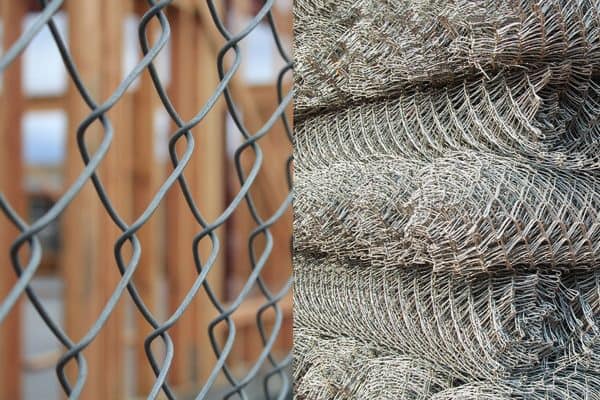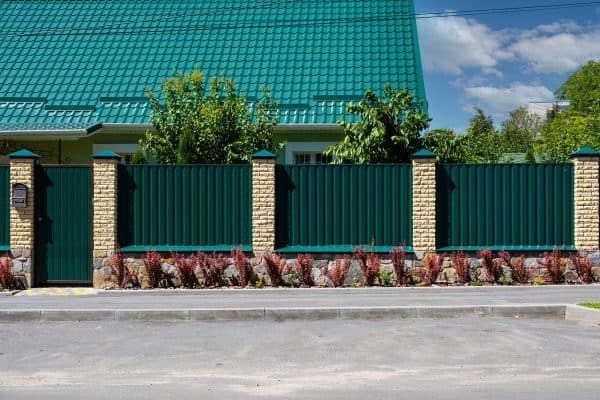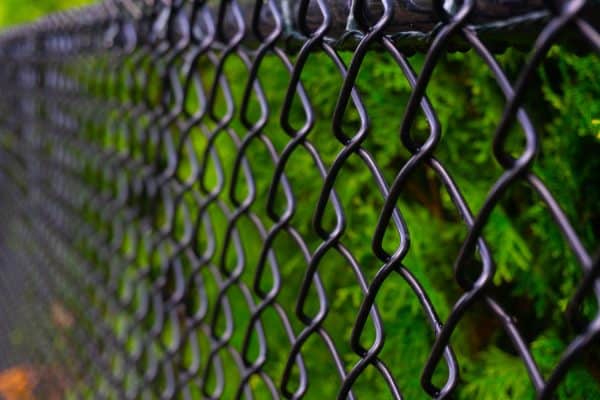Chain-link fences are functional, relatively durable, and may be used for several purposes. It is a popular choice because of affordability, easy maintenance, and security. Like most structures, one important consideration arises, how long do they actually last? We have researched every aspect you need to know about chain-link fences.
On the average, a chain-link fence lasts between 25 to 35 years. Its actual lifespan however may be determined by several factors, including:
- material size and specifications,
- general layout,
- purpose and usage,
- local climate,
- and maintenance.
If you have an existing chain-link fence or are considering installing one, this article aims to provide pertinent information regarding its features, comparative characteristics, and an overall view of fencing durability.
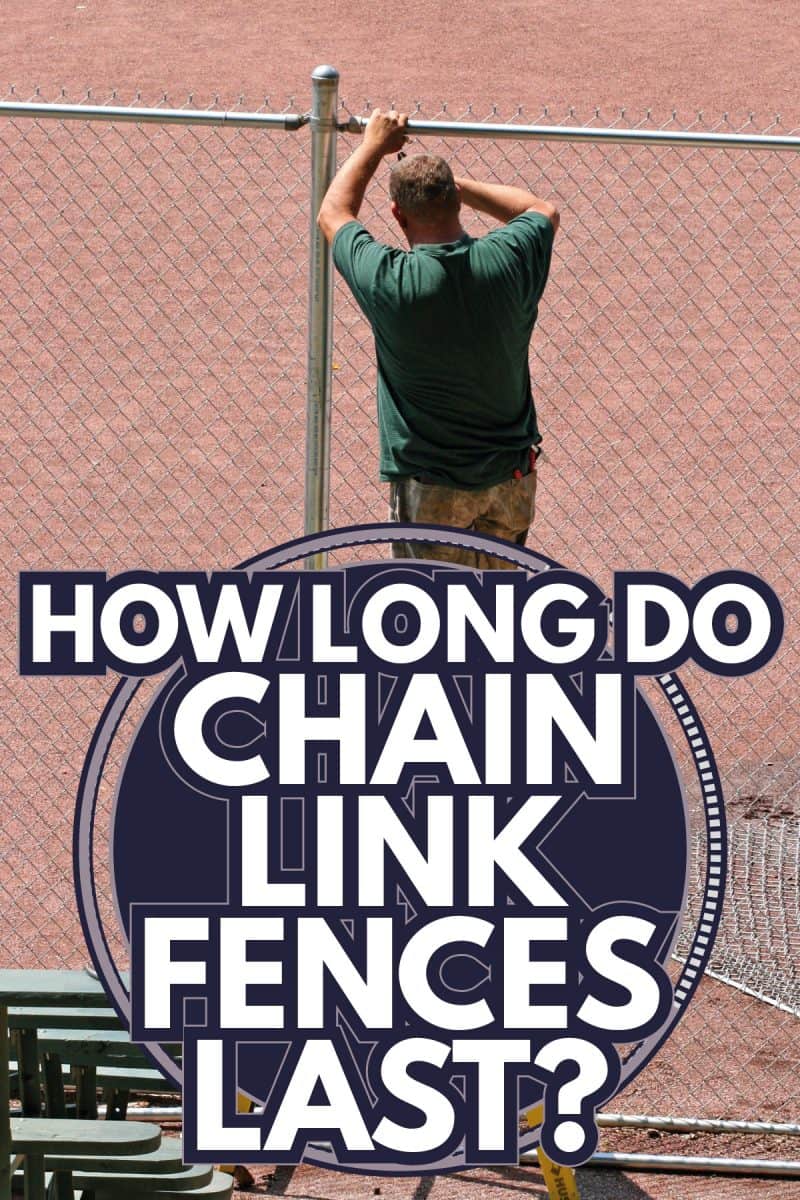
Parts Of A Chain-Link Fence
Knowing the basic components of the fence will familiarize you with their functions and provide insight on how to maximize the usage of each part.
A chain-link fence consists of anchoring posts, woven steel panels, horizontal rails, or tension wires.
Posts serve as the foundation of the whole structure, the material and strength of which determine the integrity and durability of your fence. Woven steel in a zigzag pattern acts as the panel or surface covering of the enclosure, it is stretched and affixed to the posts.
A top and bottom rail or tension wire maintains the formation of the wire panels and keeps them in place.
Factors That Affect The Longevity Of Your Chain-link Fence
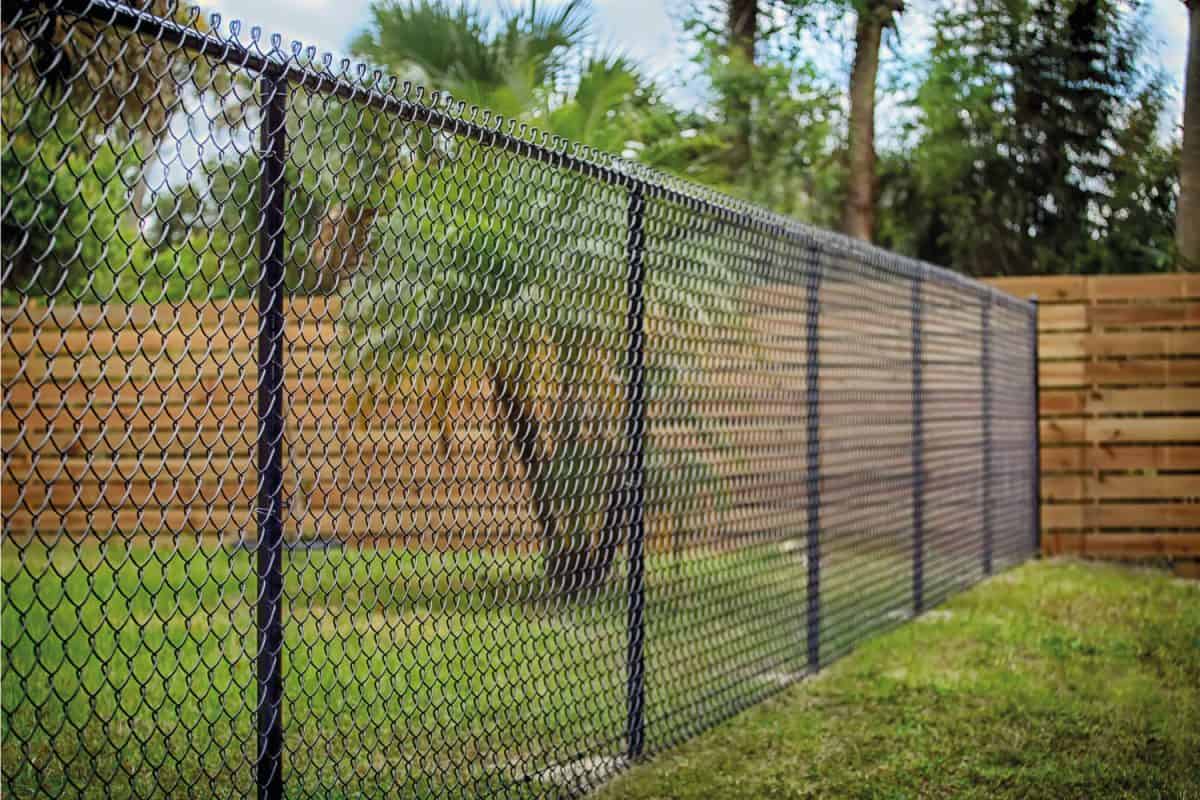
Material Specifications
The posts, rails, and wire mesh are available in different sizes or gauges. Consequently, the thickness and quality directly affect the strength and durability of the material. Choosing the appropriate specifications in connection to the exact dimensions of your fence is relevant to how long it lasts.
For a six-foot high fence, for instance, a wire diameter of 50 millimeters is sufficient, the size could generate enough tension to sustain its form and structure. Research or consult professionals to determine the ideal gauge for your fence.
Posts
You may opt for wooden, concrete, or iron posts to anchor the chain-link fence, the dimensions also matter and affect its lifespan. Given the same example of a six-foot fence, the diameter of the post must at least be six inches wide.
It would prove stable enough to sustain the elements. Metal posts have the greatest durability, whereas wooden materials may be needed to be changed more often.
Tension Wires & Rails
To secure the wire panels, you can either use tension wires or horizontal rails. Metal rails are more durable and maintain the wire structure more effectively. They prevent sagging and deformation better, and consequently, you do not have to replace portions of the fence as much if you used tension wires.
Galvanized, polyester, or plastic coated wires are always an available option, naturally, they prolong the longevity of your fence. Some manufacturers feature rustproofing and protective coating to prevent corrosion and early breakdown. They might cost more than plain or untreated materials but are worth the expense in the long run.
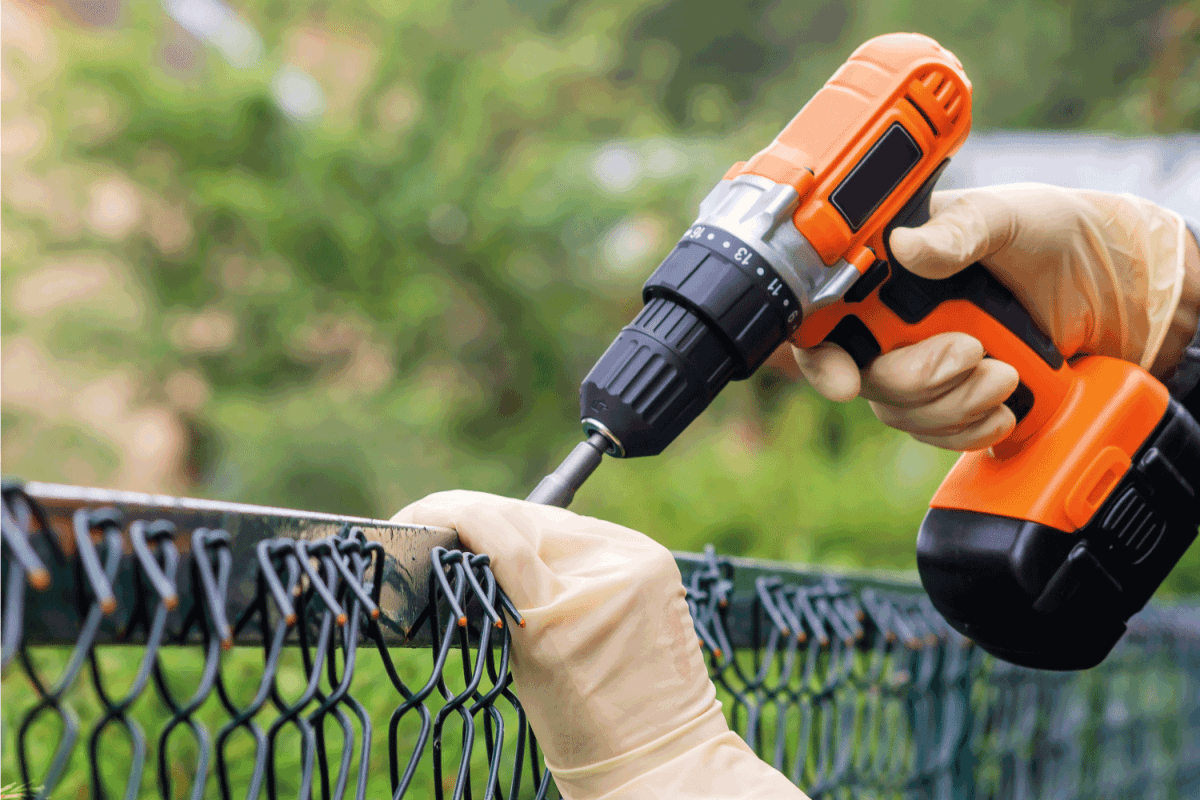
Structure And General Layout
The material dimensions of your fence may be the right gauge or size but the construction or layout would greatly influence their function and durability.
The thickness of your wire panel or the strength of your post would make little difference if the foundation was improperly set.
For a chain-link fence, the general rule is that for a 24-inch deep footing for a four-foot fence, an additional three inches are required for every foot higher. Therefore, a five-foot fence needs 27 inches while a six-foot fence would require 30 inches of foundation depth.
It is recommended that all posts be set in concrete, as it would prevent the tension from the meshed wire to displace or pull the posts out of alignment. The distance between supporting posts should not exceed 10 feet. The terminal or corner ones must be the most stable.
For higher structured fences, horizontal metal rails are more suitable than tension wires, they provide more stability and support, thus prolonging the longevity of your fence.
Purpose And Usage
The average lifespan of your chain-link fence would apply for residential use since they are not subjected to other factors. If properly maintained, they may even exceed the usual duration of 35 years.
When utilized as borders for sports, confinement purposes, or safety means, chain-link fences may not last as long due to repeated and constant stress.
For instance, a basketball, baseball, or tennis court would subject the fence to regular tension, this would damage the panels faster and require repair or replacement.
The same would hold true if it were used in a dog pound or construction area, an elementary playground, or public park. The parts of the fence may deteriorate faster when exposed to such environments.
Note that they are generally discouraged for farm or ranch purposes.
Climate
Rust and corrosion are the main reasons metal fences don't usually last. If you experience rainy weather or snow, it may not be the best material option for your fence.
Reinforced and weatherproof chain-link fences are available but constant moisture can still affect their durability and lifespan. Consider wrought-iron, vinyl, or composite-based materials instead.
Rusting is further accelerated when the posts are simply erected into the soil, water on the ground damages the foundation, and eventually, the entire fence. One general advantage of a chain-link fence is that it allows strong winds to penetrate, making it less vulnerable to storms and hurricanes.
If you have an existing fence, prolong its use by either painting or sealing to protect the surface from extreme weather.
Maintenance
Chain-link fences require minimal maintenance, this does not mean, however, that you neglect to inspect the structure regularly. Check for early rust formation, deformed wire mesh, and, most importantly, the condition of your posts.
Replace wire panels that sag or become loose, sand, and apply primers to rusted areas and make sure the foundation is intact. Painting the fence from time to time prolongs its life, and enhances the appearance.
Compared to wood and other lumber, chain-links are more affordable and durable, whereas, steel, wrought iron, vinyl, and composite materials may be pricier but considerably stronger. Consider these materials based on their features and decide which best applies to your needs.
What Are Alternative Fencing Materials I Can Use?
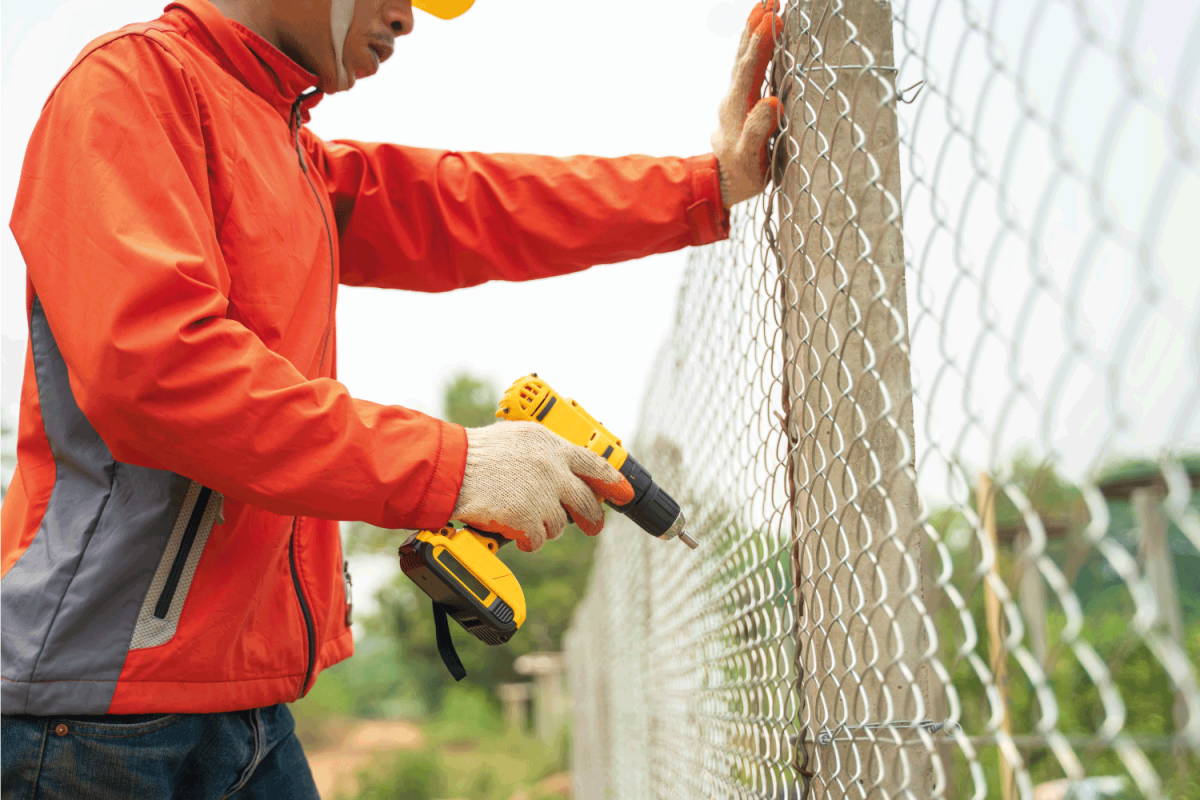
Wood
Redwood, cedar, and pressure-treated pine are the best fencing materials to utilize if you intend to use wood. These three are considerably durable, and cost-effective, but have a lifespan of only 10 to 15 years, especially if the lumber is pressure-treated.
Steel
Steel is an extremely hard-wearing and long-lasting metal. If properly maintained, this material can last up to 30 years without any damage. Apply paint and use galvanized steel to ensure its longevity.
Wrought Iron
Wrought Iron is the most expensive fencing material on the market; however, it is proven to be the most durable since it can last a lifetime. In time, it can cost you less.
Vinyl
Vinyl is made of synthetic plastic that can withstand harsh weather conditions. It is not affected by humidity, is not prone to rot or decay, and is a cheaper alrernative to wood. They typically last for 20 to 30 years, and even a lifetime.
Composite
Composite is a fencing material that is made from a mixture of plastic and recycled wood. Similar to wrought iron, it is also hard-wearing, and easier to maintain. It can last for up to 40 years.
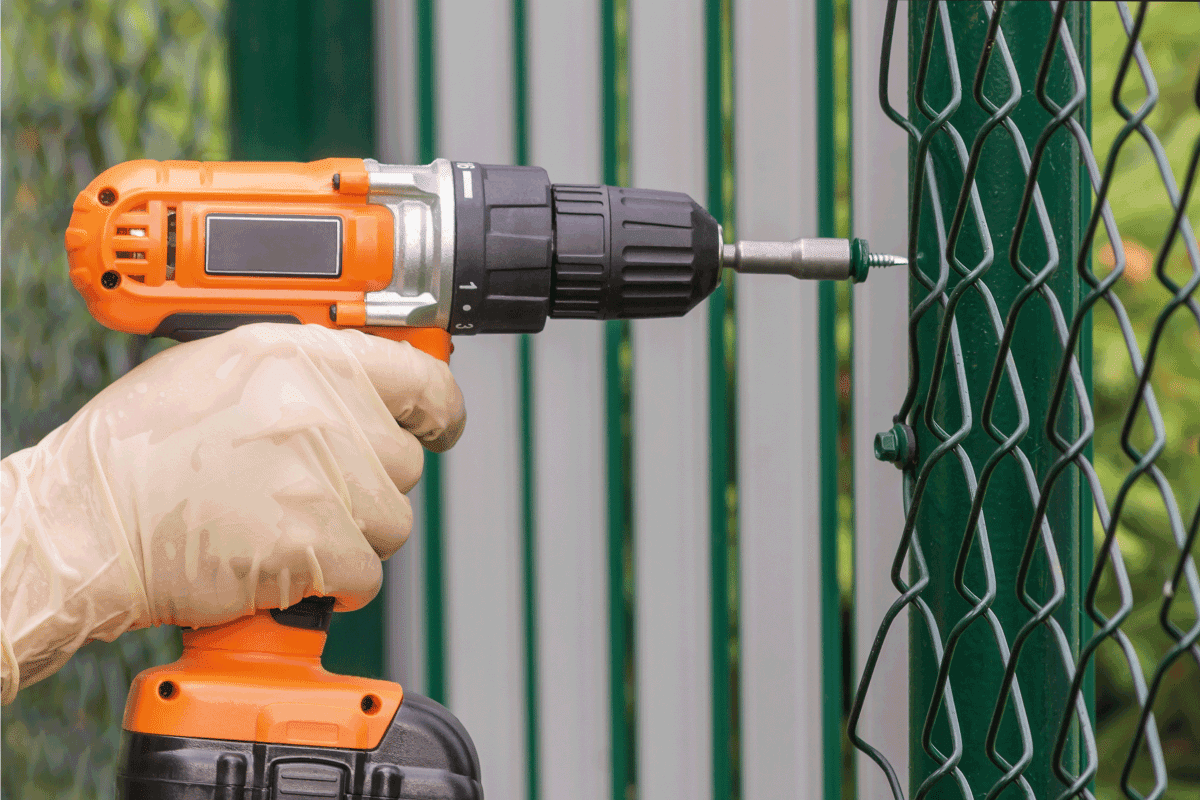
In Closing
Chain-link is a good fencing material simply because it is affordable, easier to maintain, and long-lasting. Proper maintenance will also keep it usable for the longest time.
If you have found this article informative, check out these other helpful topics:

